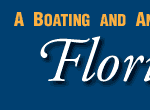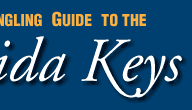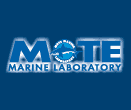CONTACT US:
Florida Fish and Wildlife
Conservation Commission
Fish and Wildlife
Research Institute
100 Eighth Avenue SE
St. Petersburg, Florida 33701
727-896-8626
|
|
|
Mote Marine Laboratory
Tropical Research Laboratory
24244 Overseas Hwy.
Summerland Key, FL 33042
305-745-2729
|
|
|

|
|
This project was funded in part by a grant awarded from Mote Marine Laboratory's Protect Our Reefs Grants Program, which is funded by proceeds from the sale of the Protect Our Reefs specialty license plate. Learn more at .
|
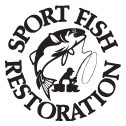
|
|
Additional funding for this project was obtained through the Federal Aid in Sport Fish Restoration Fund.
|
|
|
 |
Mooring buoys have been placed for boaters to secure their boat to without the use of an anchor. They consist of three elements: a permanent fixture to the bottom, a floating buoy at the water's surface, and a line that connects the two. Boaters tie up to the buoys and are afforded a secure way to prevent their boat from drifting away, crashing into other boats, or running aground on sensitive habitat.
|
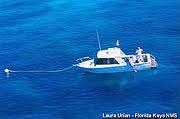
|
Throughout the Florida Keys, mooring buoys have been installed to provide a more secure and environmentally friendly way for boaters to experience what the Keys has to offer. Since 1981, almost 400 mooring buoys have been deployed in the Florida Keys National Marine Sanctuary to prevent damage to the coral reef caused by boat anchors.
An additional 375 mooring buoys are deployed in Boot Key Harbor and Key West Mooring Field for use by transient boats and live-aboards. Boaters wanting to use these buoys should contact the dockmaster at the links provided before tying to any buoys in these mooring fields.
|
MOORING BUOYS IN THE SANCTUARY
In the FKNMS, a mooring buoy is an 18 to 22 in. diameter white plastic float with a blue stripe that is used by boaters to secure their boat in a reef environment without risking damage to the corals. There is a 12 ft. to 15 ft. yellow floating pickup line attached to the top of the buoy. The mooring buoys are designed for short time use and employ an embedment type anchor that holds the buoy securely in place without causing any damage to nearby corals.
Reef mooring buoys eliminate the need to drop anchor on fragile coral reefs by providing boaters with a convenient means of securing their boat. Anchors, line and chain can break and damage living coral formations. Buoys are available at frequently used reefs within the Sanctuary and usually encircle shallow coral reefs. We encourage you to use them instead of anchors.
How to use reef mooring buoys:
- Buoys are available on a first come first served basis.
- Smaller boats are encouraged to tie off to one another, thereby allowing larger vessels access to buoys. Remember, the larger the vessel, the more potential damage to the coral (if an anchor is used).
- Please maintain idle speed/no wake in the vicinity of the mooring buoys. Watch for swimmers, snorkelers, and diver bubbles.
- Approach slowly from downwind/current. Idle directly to the buoy without meandering among other dive boats. Reverse the procedure when leaving.
- Buoys have been placed to provide clearance for most boats when tied up during normal conditions. To avoid grounding, use caution when approaching and while tied to a buoy. Larger than average vessels must check depths so that contact with the bottom is avoided.
- To secure your boat to a mooring buoy, run your line through the loop of the floating pick-up line and cleat both ends to the bow of your boat. Add enough line to create a horizontal pull on the eyebolt, otherwise the eyebolt will be pulled out. A good rule to remember is: if the buoy is pulled underwater, you must let out extra scope. On rough days, add extra scope to the pick-up line to improve the ride of your vessel in rough seas and reduce wear on the buoy system.
- While tied to a buoy, sailboats should not leave up steadying sails; this will put too much strain on the mooring buoy eyebolt.
- Inspect the buoy your boat is tied to; you are responsible for your vessel. Check that it is holding as intended. Report problems to any Sanctuary office or Sanctuary patrol
- If there are no buoys available, anchor only in sand, NEVER IN CORAL. Always check to be sure that your anchor is not dragging and your anchor chain is not contacting coral.
|
FKNMS maintained mooring buoy locations in Marine Zones:
SPA - Sanctuary Preservation Area, RO - Research Only,
ER - Ecological Reserve,WMA - Wildlife Management Area
|
- Tennessee Reef
- Alligator Reef SPA
- Cheeca Rocks SPA
- Hens and Chickens SPA
- Davis Reef SPA
- Conch Reef SPA,RO
- Molasses Reef SPA
- French Reef SPA
- Grecian Rocks SPA
- Key Largo Dry Rocks SPA
- Elbow Reef SPA
- Carysfort/South Carysfort SPA
|
- Cottrell Key WMA
- Western Dry Rocks
- Sand Key SPA
- Rock Key SPA
- Eastern Dry Rocks
- Western Sambos ER
- Pelican Shoal WMA
- Looe Key SPA, RO
- Sombrero Key SPA
- Coffin's Patch SPA
|
For a more complete listing of mooring buoys inside the Florida Keys National Marine Sanctuary, please visit Mooring Buoys in the Florida Keys National Marine Sanctuary.
|
Additional mooring buoys can be found in John Pennekamp Coral Reef State Park, Lignumvitae Key State Botanical State Park, Indian Key State Historical Site, and San Pedro Underwater Archaeological Preserve.
|
|
If you are out snorkeling, diving, fishing, paddling, or boating and see anything that may be unusual or out of the ordinary (including lionfish) in the waters around the Keys , please record the location, date, and time, and contact the Marine Ecosystem Event Response and Assessment (MEERA) project. They can be reached by phone (305-395-8730), e-mail, or online.
If you have any questions, comments, or suggestions about this Web site, please e-mail us at Boating_Guides@MyFWC.com.
Would you like to receive notices of changes to this Web site and the Boating and Angling Guides to the Upper, Middle, or Lower Keys? If so, please e-mail us and include SUBSCRIBE-KEYS in the subject line.
|
